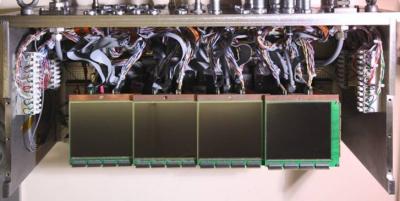The instrument known as MUSETT1 detected its first heavy nuclei during a commissioning experiment that took place in early April 2010 at the GANIL2 accelerator in Caen. MUSETT was built for identifying very heavy elements: transfermium, which are the elements beyond fermium (Z=100). Nuclear physicists are interested in these extreme state of matter for testing the theoretical models that describe the nuclei. Initial results obtained with MUSETT are highly satisfactory, providing very good identification of the produced isotopes, thanks to an original method called ‘genetic correlations’. This method can tag nuclei by detecting its decay. MUSETT provides a preview of the detection for the future Super Separator Spectrometer S3, dedicated to the hyper-intense SPIRAL23 beams, which will allow scientists to explore the heaviest nuclei.
--------------------------------------------------------------------------------
1MUSETT: MUr de Silicium pour l’Etude des Transfermiens par Tagging -silicon wall for the study of transfermians by tagging
2GANIL: Grand Accélérateur National d’Ions Lourds -Large-scale heavy-ion accelerator
3SPIRAL2: Séparation et Production d’Ions RAdioactifs en Ligne -online radioactive ion beam facility
• Structure of nuclear matter › Atomic nucleus
• The Electronics, Detectors and Computing Division • The Nuclear Physics Division • The Systems Engineering Division
• MUSETT




